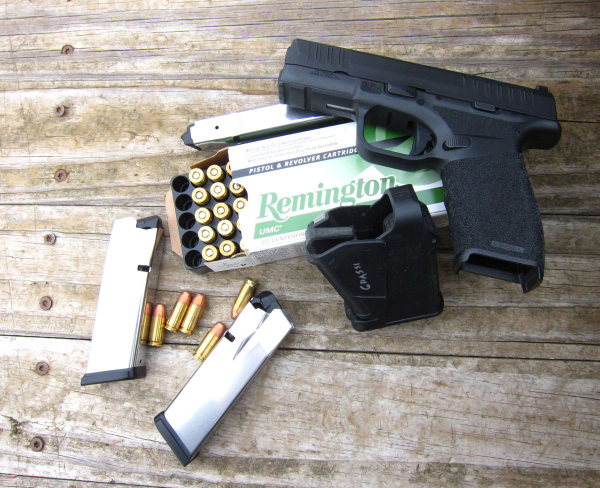A question that routinely comes up when a new user gets an auto pistol – whether a police trainee or armed citizen – is “how long can the magazine stay loaded without compromising reliability?” – or words to that effect.

It’s a fair question. I’m no metallurgist, but I’ve been handling guns since the 1960s. One advantage to the revolver is that it can remain loaded with the springs at rest until needed. An auto pistol magazine operates on spring pressure pushing rounds up into the feeding path of the pistol. That’s kind of important; if it’s slow, you have a stoppage.
Auto pistols operate on springs. For example, failure to keep up with the recoil spring, allowing it to get weak, also leads to malfunction.
Knowing the recommended spring replacement schedule is critical. With magazine springs isn’t the same thing true?
Well, no. If the magazines are loaded and left alone – assuming that the manufacturer didn’t select a magazine body too short for the capacity and over-stress the magazine spring – they seem to work fine.
I was taught that constant compression of a fully-loaded magazine doesn’t create a weakening of the spring. It’s the repeated compression and decompression of a spring that create the small changes that reduce spring power; like every time you fire the gun, it’s the recoil spring taking the beating. The magazine spring, to a lesser extent does too – but you have several magazines, right?
When we first got auto pistols, we were told that a weak magazine could have the spring removed and stretched “to get you by until you get a replacement spring or magazine.”
That’s weak tea. It doesn’t make the spring any better, best to discard it.
It’s the same for rifles.
According to sources, the Army Armament Research, Development and Engineering Center at Picatinny Arsenal did a study they published in 2017. I’ve not seen it.
The study had to do with ‘performance of (M16 30 round magazines) after extended storage.’
They loaded 300 magazines and let them set. Over a five-year period, 30 magazines were fired in reliability testing every six months. Spring pressure was measured at the outset and at the time the mags were pulled for use.
There were no stoppages related to the magazines.
I personally have had loaded S&W 2nd and 3rd generation 45 magazines loaded for 8 -10 years. I shot them out one year at the range. There were no stoppages.
Having the magazine capacity specification too large for the actual magazine can create problems. Expect to change those magazine springs more often.
But all this concern about magazine springs can miss the point. I’ve had 1911 45 magazines that had some “spread,” including cracks, from being kept loaded. That was many years ago, but I still like to examine magazines at every cleaning.
Let’s go to gun spring maker Wolff for their take on magazine springs.
“More recently higher capacity magazines have become popular. These are designed to hold more rounds with less spring material often in the same space. This puts more stress on the spring and will cause it to fatigue at a faster rate. Unloading these magazines a round or two will help the life of the spring.”
That’s from people in the business of selling magazine springs. They tell you how to practically extend the life of the spring.
If you can rotate your magazines, you can check the springs – and the magazine body, follower, floor plate – and inspect your ammo. It gives you the opportunity to clean whatever mess accumulated in the magazines from being worn.
You do have at least six magazines for each pistol you own, right?
It feeds the pistol, take care of it. If the pistol doesn’t get fed, it can’t do its important job.
— Rich Grassi
